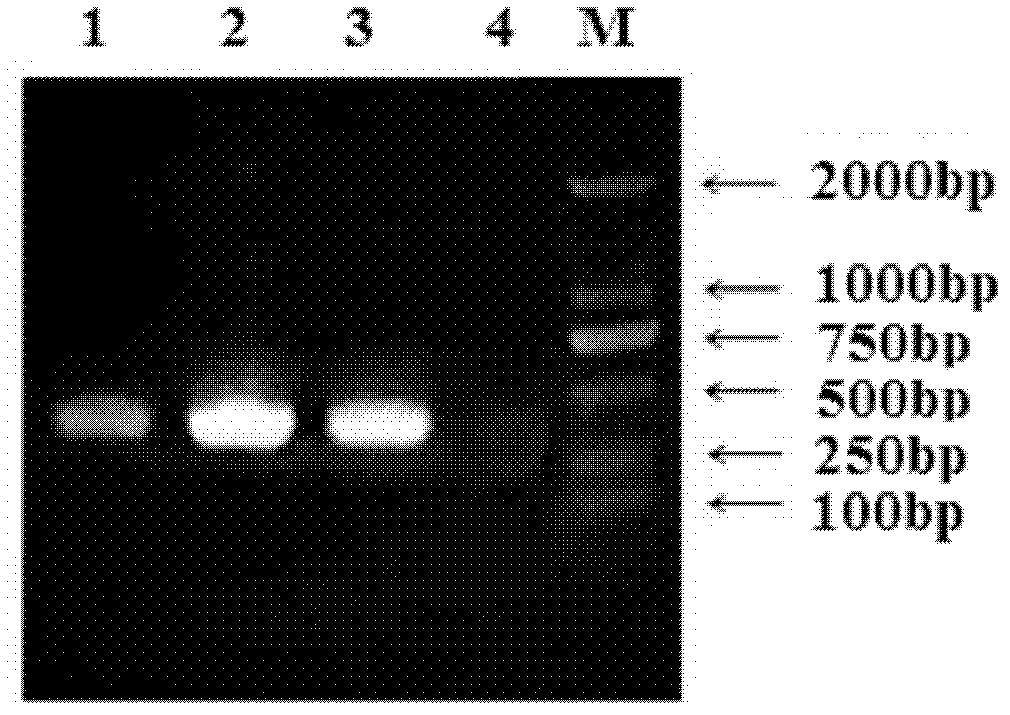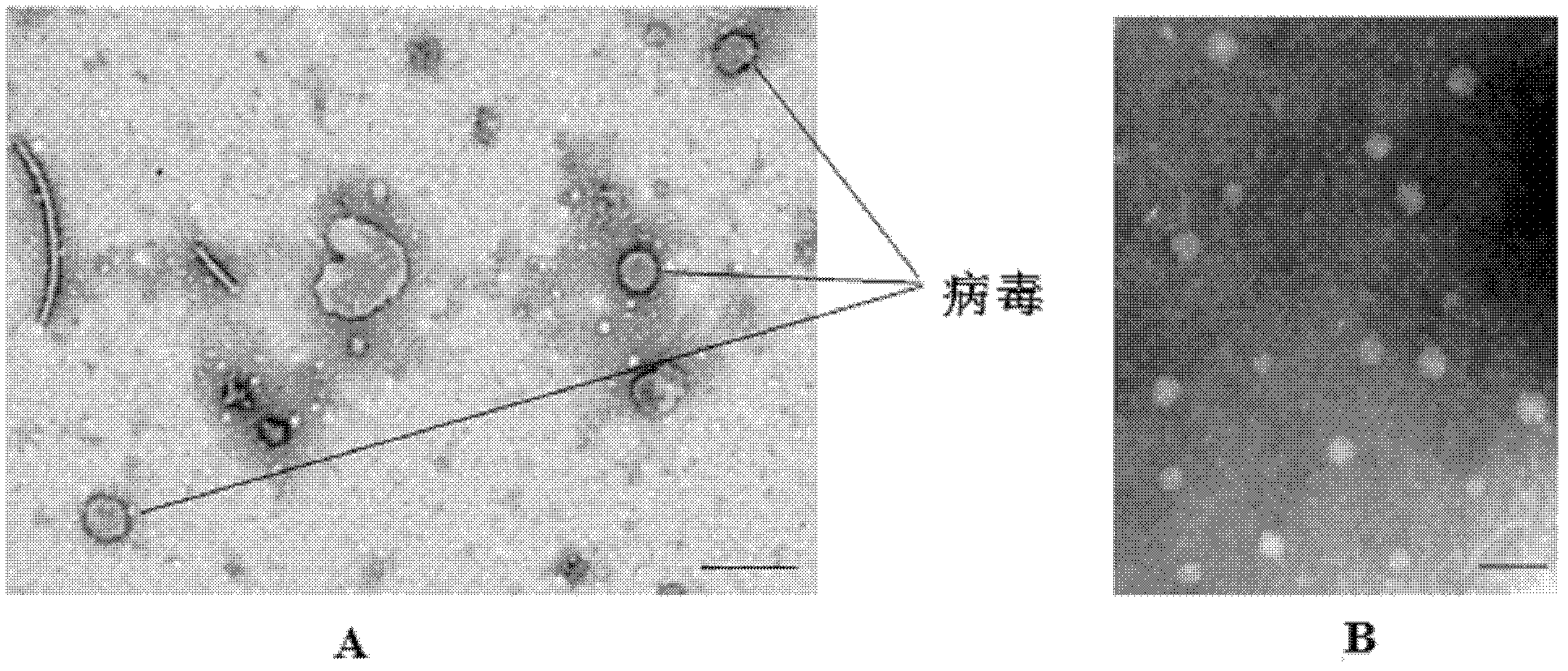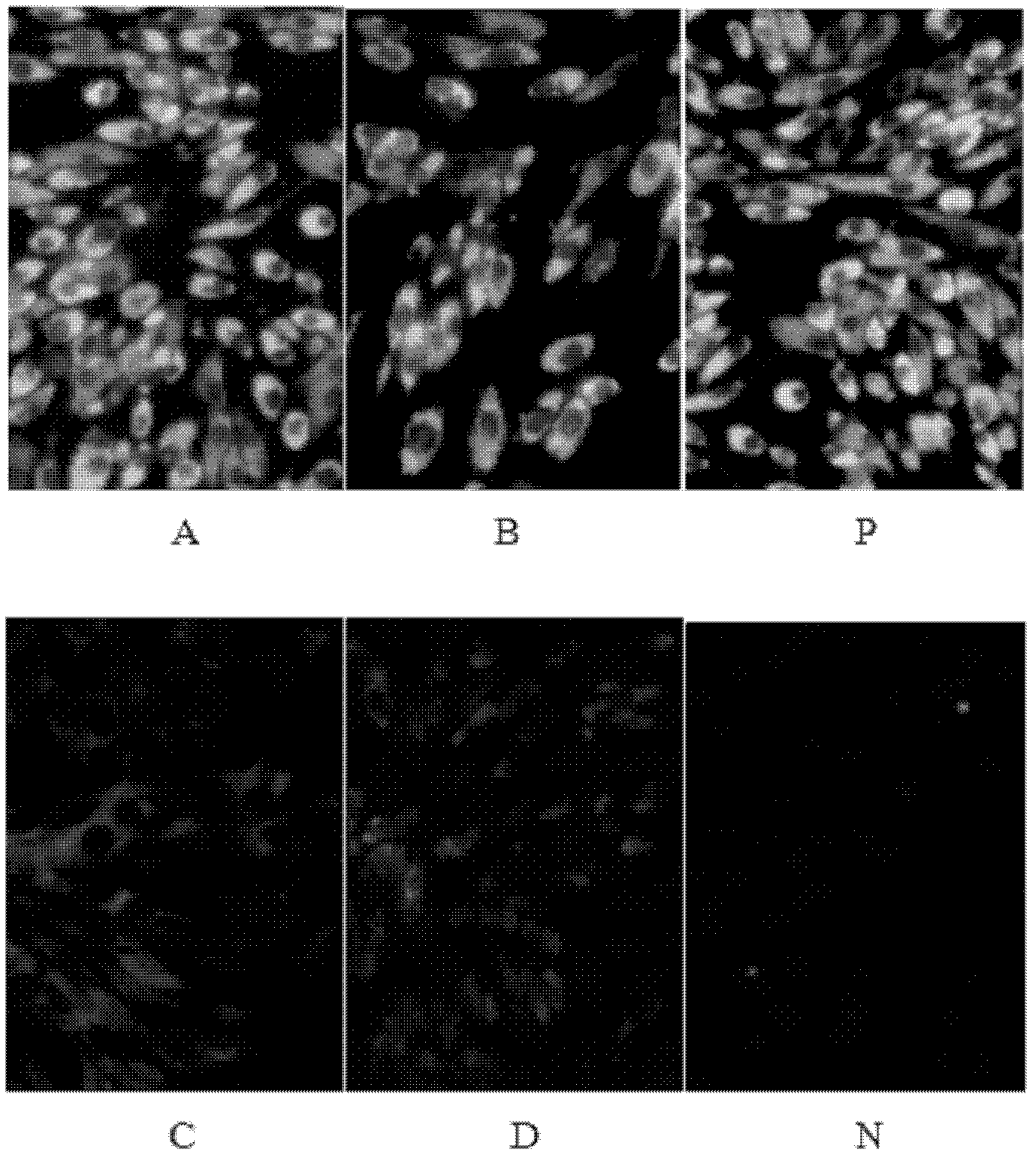Anti-Japanese encephalitis virus monoclonal antibody and its application
A technology of monoclonal antibody and Japanese encephalitis virus, applied in the biological field, can solve the problems of long time for virus isolation and culture, unsatisfactory results of serological diagnosis of Japanese encephalitis, and low positive rate
- Summary
- Abstract
- Description
- Claims
- Application Information
AI Technical Summary
Problems solved by technology
Method used
Image
Examples
Embodiment 1
[0039] Embodiment 1 prepares pure whole virus antigen
[0040] Step 1 Virus Propagation
[0041] Use BHK cells (Shanghai Jinke Biological Co., Ltd.) to grow into cells in DMEM containing 8% calf serum (Hangzhou Sijiqing Bioengineering Materials Co., Ltd.), 100 U / ml penicillin, and 100 μg / ml streptomycin Pour off the nutrient solution after the single layer, wash once with PBS (pH7.2) or serum-free nutrient solution, inoculate with JEV (SA14-14-2, Hunan Zhongan Biopharmaceutical Co., Ltd.), and treat at 37°C for 1.5-2h , then washed once with PBS (NaCl 137mmol / L, KCl 2.7mmol / L, Na2HPO4 4.3mmol / L, KH2PO4 1.4mmol / L) or serum-free nutrient solution, added 2% maintenance solution, and incubated at 37°C with CO2 After 2 to 3 days, observe under a microscope, and when the cytopathic effect (CPE) reaches 85%, freeze at -20°C until use.
[0042] Step 2 Concentration and purification of virus
[0043]Freeze and thaw the collected virus repeatedly 3 times, centrifuge the suspension at...
Embodiment 2
[0061] The establishment of embodiment 2 hybridoma cell lines
[0062] Step 1 Mouse Immunization
[0063] Immunize 3 BALB / C mice (6-8 weeks old, purchased from the Experimental Animal Center of the Academy of Military Medical Sciences of the People's Liberation Army) with 30%-45% of the purified JE full poison in Example 1: i Immunization for the first time: Japanese encephalitis virus 150 μg / mouse, add an equal volume of Fred's complete adjuvant (CFA, sigma company) and mix well, then inject BALB / C mice with 1ml / mouse subcutaneously in multiple points, 0.2ml / point, with an interval of 3 weeks. ii Second immunization: the dose and route are the same as above, this time with an equal volume of incomplete Freund's adjuvant (IFA, sigma company), with an interval of 3 weeks. iii. The third immunization: the dose is the same as above, without adjuvant, and the same volume of normal saline is used instead, and BALB / C mice are injected intraperitoneally; 10 days later, the eyeball b...
Embodiment 3
[0088] Example 3 In vivo induced ascites method to prepare monoclonal antibody
[0089] Ten BALB / C mice aged 6-8 weeks were pre-sensitized by intraperitoneal injection of 0.4ml liquid paraffin, and 7 days later, hybridoma cells 2B4 (CGMCC No.5124) were injected at 1×10 6 The above-mentioned presensitized mice were injected intraperitoneally with an amount of each (diluted with equal amount of normal saline to 500 μl / only), and the mice were observed after 10-14 days. For ascites, use a syringe to collect the ascites into a centrifuge tube, centrifuge at 2000r / min for 10 minutes, take the supernatant, which is the ascites with a large amount of monoclonal antibody 2B4, store it in a 4°C refrigerator for backup, and freeze it at -20°C or -40°C for long-term storage.
PUM
 Login to View More
Login to View More Abstract
Description
Claims
Application Information
 Login to View More
Login to View More - R&D
- Intellectual Property
- Life Sciences
- Materials
- Tech Scout
- Unparalleled Data Quality
- Higher Quality Content
- 60% Fewer Hallucinations
Browse by: Latest US Patents, China's latest patents, Technical Efficacy Thesaurus, Application Domain, Technology Topic, Popular Technical Reports.
© 2025 PatSnap. All rights reserved.Legal|Privacy policy|Modern Slavery Act Transparency Statement|Sitemap|About US| Contact US: help@patsnap.com



